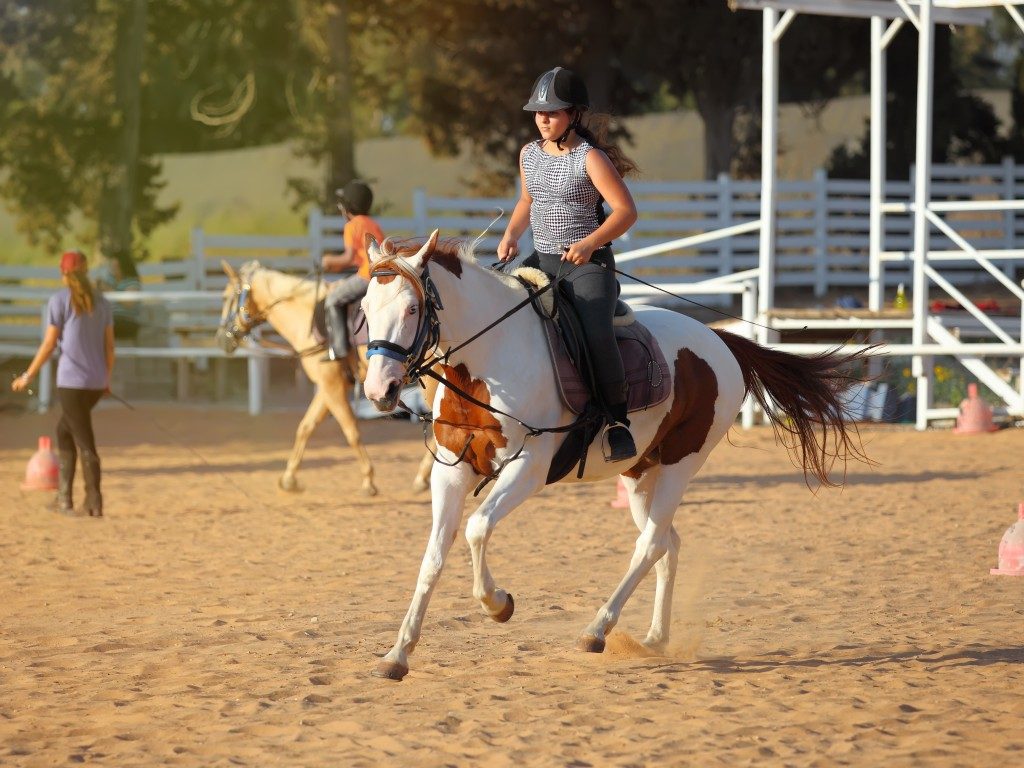Cognitive therapy. Exposure therapy. Medications. People with post-traumatic stress disorder (PTSD) have several options when it comes to treatment. But not all psychotherapy sessions and anti-anxiety medications can work for everyone. For some, it takes a different kind of approach to manage the symptoms and overcome the struggles of a condition that has affected 70 percent of adults in the US.
For many veterans, that new approach involves horses.
Therapeutic Horseback Riding
Equine-assisted therapy (EAT), commonly known as therapeutic horseback riding, is an alternative treatment to explore. It involves the use of trained riding horses and the different skill sets that come with handling and managing a large animal, like a horse. Those who have never been on a horse before don’t have to worry because a riding instructor and medical personnel will be around to oversee a session.
This type of therapy traces its roots to 460 BC when Hippocrates wrote about “Natural Exercise” and how horseback riding is healthy. The treatment grew when Liz Hartel, a known equestrian, won a silver medal at the Helsinki Olympics despite suffering from polio. From then on, scientists and medical professionals strived to understand the apparent healing tendencies of working with horses.
The American Psychological Association refers to this treatment as an evidence-based practice in psychology (EBPP). Those who tried therapeutic horseback riding reported satisfactory results and improved mental wellbeing.
An Alternative Coping Mechanism

How will horseback riding help someone with PTSD? For one, it can restore enjoyment in life. Engaging in therapeutic horse riding activities instills the feeling of wanting to go out again. Exposure to the great outdoors, fresh air, and the relaxing ambiance of nature can help a person’s overall mental wellbeing.
A change in ambiance can help a person with PTSD. Enclosed spaces, like hospitals, clinics, and therapy rooms can invoke feelings of anxiety; especially if there are memories associated with these places that trigger symptoms of PTSD.
Handling a large animal a horse involves tremendous patience and mutual trust. For a horseback riding experience to go smoothly, a patient has to learn how to trust the animal, and it has to learn to trust the person back. In attempting to communicate with the animal, an individual learns to reconnect with their emotions. They can gain some semblance of control over their life again. Since emotional outbursts frighten the horse, a person can learn to control these emotions with each session as they seek to make a connection with the animal.
Overcoming an obstacle, such as managing a horse and riding it without needing assistance, can rebuild self-confidence. PTSD reduces a person’s ability to process positive emotions; with improved confidence, it can immensely help instill positive feelings.
Aside from riding the horse, a PTSD patient can also learn about how to properly care for the animal. They’ll learn how to put on horse tacks, which involve making the horse wear a saddle, breastplates, stirrups, reins, and bits. After successfully equipping the horse for riding, a person learns to lead the animal around willfully.
If conventional treatment doesn’t work for a loved one with PTSD, look into equine-assisted therapy. Riding, at the least, allows a person to go outdoors, to get some exercise. Equine therapy, at the most, allows someone struggling to come out of the pain, knowing that a gentle, friendly animal will be around to help them heal.

